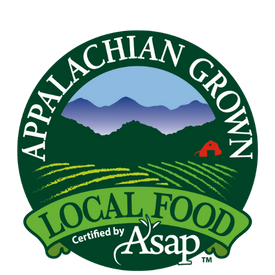Getting Started With Laying Chickens
posted on
January 19, 2023
Are you wondering if you can raise your own chickens for eggs and possibly meat? Or maybe you been admiring those cute little chicks at the feed store and wondering if you could ever own chickens? Or you are tired of buying store bought eggs every week and want to collect your own daily? Or it could be any of the other awesome reasons to raise chickens! Keep reading for everything you need to know about getting started raising your own backyard chickens for eggs!
I am here to tell you the absolute necessities you really need for getting started with chickens, common chicken health issues, some fun coop ideas and some of my favorite additional resources.
Some of the links in this post are affiliate links. If you purchase through one if these links, our farm will earn commission from your purchase (at no extra cost to you!). Thank you for your continued support!
BEFORE PURCHASING
Let’s cover some very basic, but important items to consider BEFORE purchasing your birds.
First and the most important is knowing if you permitted to own livestock where you live? If you are permitted, are there any deed restrictions regarding the type of livestock or how many you can have? You can find out this information by checking your deed or your local clerk’s office.
Secondly, do you have:
a) The time to care for birds? Chickens are one of the "easier" (and less expensive) types of livestock, but they do require work!
b) Extra money for feed, supplements, housing and bedding, medicine they might need (if you choose to treat), etc.?
c) Predator proof housing and a safe run/place to forage?
d) Enough space for the amount of birds you want?
e) The essentials (don't worry, we list below)?
Thirdly, what type of birds are you going to be raising; layers or broilers (meat birds)? I will have a future detailed blog post on broilers, but in the mean time, do your research and decide which birds will work best for your family.
THE ESSENTIALS
Listed are the absolute bare necessities that you will need in order to properly care for your birds. You can find everything we use on our farm here!
FEED
Chickens enjoying foraging, but they still need feed and supplements in order to be strong and thrive. Each chicken eats about 2 pounds (1 kg) of feed per week. They will eat less in the summer and more in the winter when they need to exert more energy to stay warm.
I am going to keep this section simple as I will have a future post on the details of chicken feed.
The easiest and most popular type of chicken feed is commercial feed that you can find at your local farm store. There are specific feeds formulated for chicks, young birds and adult birds. There are also specific feeds for meat birds and for layers, so it is important you know which type and age of birds you plan to raise before you purchase any feed.
Chick (Starter) Feed
Chick feed is specific for ages from day old to about 6 weeks. When raising layer breeds, it is recommended to feed a ration that contains 20% protein. This chick feed is usually referred to as "starter feed". Once your chicks reach about 6 weeks of age, they can begin on a lower protein (~18%) feed known as "grower". Both of these feeds are crumbled so it is easier for the small chicks to eat and digest properly.
Young Layer Feed
Also known as "grower" feed contains less protein than chick starter because the older a bird is, the less protein they require (for layer breeds only). Is it recommended to feed a grower ration from 6 weeks to when a hen begins to lay.
Adult Layer Feed
An adult layer ration should contain around 16% protein. It is recommended to begin this ration when hens have started laying. Layer feed comes in two different forms, pellets and crumble. Pellets provide less waste than crumbles and since two-thirds of the cost of keeping chickens goes to feed, the less that you waste, the lower your feed cost will be. But chickens can eat both with no issue. However, you could find that your birds are picky and prefer one over the other (ask me how I know, LOL).
Treats
Scratch grain is a great treat, especially in the winter. Throw some of this down late in the day to help keep them warmer at night during the cold months. This can be used year round but should be viewed as candy for chickens. Scratch grain should NOT be the sole source of nutrition for your birds. Beware that if you are wanting to stay away from feeding corn, scratch is not a good option for you or your birds because it does contain quite a bit of corn.
Mealworms or Black Soldier Fly Larvae are like crack for chickens. You can purchase them at your local feed store, Amazon or grown your own! Again, these bugs should NOT be your chickens sole source of nutrition, but rather a snack or a way to train your chickens to come when you are around.
Supplements
Depending on how you are raising your chickens, they may need supplements to ensure they are living their best life.
Apple cider vinegar with The Mother is a controversial topic amongst many chicken keepers. We add ACV with The Mother to our chickens water occasionally to ensure healthy immune systems and digestion. Studies have shown that ACV does help poultry absorb more nutrients when their water is treated with ACV with The Mother. In our experience, our chickens and other livestock perform better with ACV.
Grit is needed for chickens who only eat commercially prepared rations or those who forage. Pasture (or yarded) birds pick up natural grit from the soil, but they may not be getting enough. If you have a gravel driveway and your chickens have access to it, do not be surprised if you see them eating gravel - it helps with their digestion. However, if they do not have access or you feel like they need more, a grit like this one should be offered in a separate feeder and available at all times.
Calcium is needed by laying hens to keep eggshells strong. The amount needed varies with age, diet and state of health (i.e. older hens need more calcium than younger hens). Eggshells consist of primarily calcium carbonate which is the same material that is found in oyster shells, aragonite, and limestone. Calcium is only needed if you are making your own feed or not feeding a complete layer feed. Always check the ingredients on your feed bags. Calcium is not an additional supplement you need to buy if your layer feed already has it. Laying hens should have access to a separate feeder full of crush oyster shells, ground aragonite, or chipped limestone (not dolomitic limestone, which can be detrimental to egg production) if your feed does not already have this added.
Phosphorus and calcium are interrelated - a hen’s body needs one in order to metabolize the other. Range fed hens may not get enough so it is encouraged to balance the calcium supplement with phosphorus in the form of defluorinated rock phosphate in a separate feeder available at all times. However, commercially prepared feed contains all the phosphorus a flock needs.
Salt is needed by all chickens but only in tiny amounts. Commercially prepared feed contains all the salt a flock needs, but if you make your own feed or have foraging chickens that eat primarily plants and bugs, you may need a salt supplement. Salt deficiency causes hens to lay fewer and smaller eggs. Loose salt should always be available to range-fed chickens in a separate feeder. Idolized salt is suitable, but if you are able to purchase a trace mineral salt mix or kelp, these items can offer many more necessary minerals in addition to salt.
Flaxseed can be fed to laying hens to boost the omega-3 content of their eggs. Be careful not to feed too much of this as it can cause the egg to taste fishy.
Oyster Shell is only needed if you are making your own feed or not feeding a complete layer feed. Always check the ingredients on your feed bags. Oyster shell is not an additional supplement you need to buy if your layer feed already has it.
Feed Storage
Store all feed in a trash can with a tight fitting lid. We prefer galvanized like these. Use all of the feed in the can before opening another bag. Be sure all feed and supplements (opened and unopened) are stored in a clean, cool, and dry area.
Feeders
Feeders come in many different designs. Some of the best feeders have these important features:
- Designed to discourage chickens from sitting on the top or messing in the feed. Not all feeders come with lids, but they are handy if you have some troublemakers.
- Prevent “beaking out” which is a habit that chickens have of using their beaks to scoop feed onto the ground. Feeders that discourage beaking out with have edges that roll or bend inward.
- Easy to clean! Trust me when I say you want the feeder (and waterer) that comes apart for easier cleaning.
- Height can be adjusted to suit the chickens’ size. The feed should remain at the height of a chicken’s back. A hanging feeder works well because you can adjust the height as needed. Our favorite feeders are *here*.
You may need more than one feeder. As a rule of thumb, allow 1.5 inches (4 cm) of space per bird around a tube feeder or 1 inch (2.5 cm) of space along a trough feeder. For free-choice feeding, allow enough space so that at least one third of your chickens can eat at the same time. These are our favorite.
Waterers
Chickens should have access to water 100% of the time. Provide fresh, cool water several times a day if necessary. The best waterers are ones that discourage roosting and are big enough to supply your flock with enough water before you are able to provide more.
Waterers come in different designs as well. There are more expensive ones like automatic ones and cheaper ones like plastic ones. Each have their pros and cons. Our favorite is this one from Tractor Supply.
BEDDING/LITTER
If purchasing chicks, you will need to purchase litter. The most popular type of litter for chicks is pine wood shavings. Fine pine wood shavings are better to use for chicks who have just hatched up to 2-3 weeks old because the shaving particle is smaller and easier for chicks to move around their housing. If you do not have access to fine pine shavings, regular shavings will work just fine. Cedar shavings are a big NO NO and there is controversy over the safety of using pine shavings. Many experienced chicken tenders will suggest using Aspen litter, but it can be very costly since bedding should be changed every 2-3 days. Which ever bedding you choose, the used bedding will be a great start for a compost pile!
HOUSING
Whether you are purchasing chicks or mature hens, you will need predator proof housing. There are SO many options when it comes to chicken coops, it can be overwhelming. Here are some things to consider whether you are buying a kit, having someone build it for you or you are doing it yourself:
- Space: The minimum living space per chicken is usually said as being 4 square feet (1.25 sq m) per larger breed and 3 square feet (1 sq m) for smaller breeds for chickens who free range. For chickens that are confined to a coop they need 10 square feet (3 sq m) per larger breed and 7.5 square feet (2.25 sq m) per smaller breed.
- A perch or roost if you are raising a layer breed. Chickens natural instinct is to roost in a tree at night. To encourage chickens to roost in the coop, proper chicken housing is fitted with a perch. Plastic or metal pipe should not be used as a roost because both are too smooth for a chicken to maintain a good grip with their toes. Roosts are not necessary for short term broilers because they can cause blisters on their breasts from pressing against the roost.
- Nests/Laying Boxes - it is encouraged to have one nest per 4 hens. Nests can come in all shapes and colors. You can purchase ready-made nests like this one or DIY with plywood, 5 gallon buckets or milk crates! A reasonable nest size is 14 inches wide by 14 inches high by 12 inches deep (35 cm W x by 35 cm H by 30 cm deep). It is encouraged to have perch on the the front of the nest so the chicken can check out the nest before entering. To encourage pullets to start laying, you can place encouragement eggs like these in the nests or use golf balls. *Our favorite nest box is this one. Complete with a perch and roll out for eggs to keep them from getting dirty, stolen from your dog (like ours do LOL), and to keep the hens from pecking and cracking them. Perch folds up at night to keep hens from pooping in the nest box.
- Litter/Bedding - As mentioned above, litter for chicks is extremely important. But you should also consider litter for adult chickens as well. Other forms of litter for older hens in the coop are rice hulls, peanut hulls, chopped straw, soft hay, ground-up corncobs, shredded paper, dried leaves, or any other soft absorbent material. Periodically remove litter (and compost!) and replace with fresh litter. During the winter, you can utilize the deep litter method to help keep your chickens warm too!
- Fencing - Chickens enjoy sunlight and fresh air. Making sure their area and coop are fenced properly is the key to keeping predators out, especially at night. I am NOT a fan of chicken wire/poultry netting. It is easy to bend and does not hold up well to a predator determined to get its prey. We have found better luck with 1/4 inch hardware cloth like this. It is more expensive than chicken wire, but it protects your flock better. There are many different options for fencing and it really depends on your personal budget and the time you have to build.
A SUGGESTION ON HOUSING
We have found it extremely valuable to have a separate run/space for chickens to be housed if they are sick or need special attention. If one of your chickens develops an illness or is not holding her own, the others in the flock with peck her until she dies. Our separate coop has saved a lot of our hens!
COMMON ILLNESSES/DISEASES
After becoming familiar with how your chickens look, act and sound when they are happy, you will notice when illness strikes.
Lice and Mites
Lice and mites could be carried in from wild birds, rodents, and new chickens or recycled feeders or waterers. It is important to thoroughly clean and disinfect any recycled equipment of that sort. Chickens can naturally defend themselves against lice and mites if given the opportunity to do so. To prevent this, chickens will “bathe” in dirt. Find out how to make your own dust bath *here*.
Chronic Respiratory Disease
It is infectious and contagious, but not usual fatal. However, this can affect egg production and make chickens generally unhappy. This disease is characterized by sneezing, sniffling, and nasal discharge and can be treated with antibiotics. This disease can be caused by a number of things. You want to make sure that any materials you are using around chickens (i.e. sand, lime, DE, etc.) is safe and does not stir up too much dust for them to inhale.
A NOTE ABOUT ANTIBIOTICS
If you use antibiotics to treat your chickens, you MUST NOT eat the meat or eggs from treated birds while they are given the antibiotic or for a period of time after they are no longer being treated - called the withdrawal period. This information can be found on the antibiotic label.
Marek’s Disease
This disease causes paralysis, usually in young birds. Most hatcheries vaccinate for this before they ship day old chicks to you. There is no treatment for this disease.
Internal Parasites
Protozoa and worms are the most common type of internal parasites in chickens. Coccidiosis is a common Protozoa that takes up lodging in the intestines of a chicken. This most exclusively affects young chicks.
Worms can be picked up by adult chickens just by eating grass in the yard. Chickens that have too many worms in their gut may begin to eat less and less and start to look miserable. The likelihood of a worm problem is small, but a vet can diagnose a problem with a fecal sample and recommend treatment.
Cannibalism
It is possible that chickens can begin to harm or kill and eat their coop mates. ”Toe picking” is when chicks mistake the others’ legs for worms and begin to peck with their beak. This can be an issue at a very early age. The potential for the problem does not go away as the chicks get older. The head, vent, and the area around the base of the tail become the first spots that grown chickens will peck under certain circumstances and the results can be a bloody mess in a short period of time. The reasons for cannibalism can be related to nutrition, particular insufficient protein in their feed, or the stress of overcrowding.
PURCHASING BIRDS
When considering chickens, it is important to choose breeds that are most suitable for your area. While the American Poultry Association only recognizes 53 large breed chickens, it is estimated there are over 500 breeds worldwide. No one really knows the number because there is not a paper trail so it is very important to do your research before purchasing.
Some of our favorite breeds we have raised over the years are Rhode Island Reds, Plymouth Barred Rocks, Black Copper Marans, Buff Orpingtons, Leghorns, and Sapphire Gems.
Where to buy chicks
There are many hatcheries all over the US and the world. Most commonly, you will find chicks in any local feed store, including Tractor Supply. Hoover’s Hatchery (located in Iowa) supplies Tractor Supply with most, if not all of their chicks. It is equally important to do your research when selecting a hatchery as it is to select your breed of birds. Not all hatcheries are the same and some only supply certain breeds. Many hatcheries and feed stores require a minimum purchase of birds, so this is something to consider when purchasing.
Our absolute favorite hatchery to order from is McMurray Hatchery. Their customer service is top notch and we have always been happy with the birds we receive from them.
Where to buy adult birds
If you want eggs immediately, you can most certainly buy adult birds that are at prime laying age (around 30 weeks old) or just beginning to lay eggs (around 18 weeks of age). You can find these birds at local farms in your area or online. Again, you want to make sure you are purchasing from a reputable breeder so research is key! Check with us to see if we have any birds available here.
Additional Resources
Your local cooperative extension will be a great resource if you are just starting out. To find your local co-op, click here.
Local (small owned) Feed Stores - Many of the people running these stores have first hand knowledge and experience and are happy to help you choose the best animals and products for you.
Local Farms and Farmers - Many farms provide tours and information sessions with valuable information and it is definitely worth checking out.
Coop Ideas
Coop Kits

Sentinel Coop by Producer's Pride

Superior Construction Chicken Coop by Petmate
DIY Plans


Find more free plans here!
Keep in mind, while these chicken coops look amazing, if it doesn't serve the true purpose of protecting your hens from predators, easy to clean and collect your bounty, then it doesn't need to be fancy.
Happy chicken tendin'!





